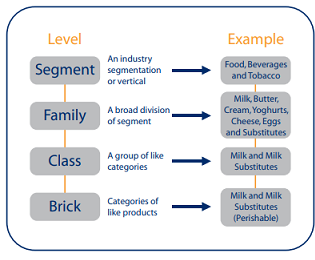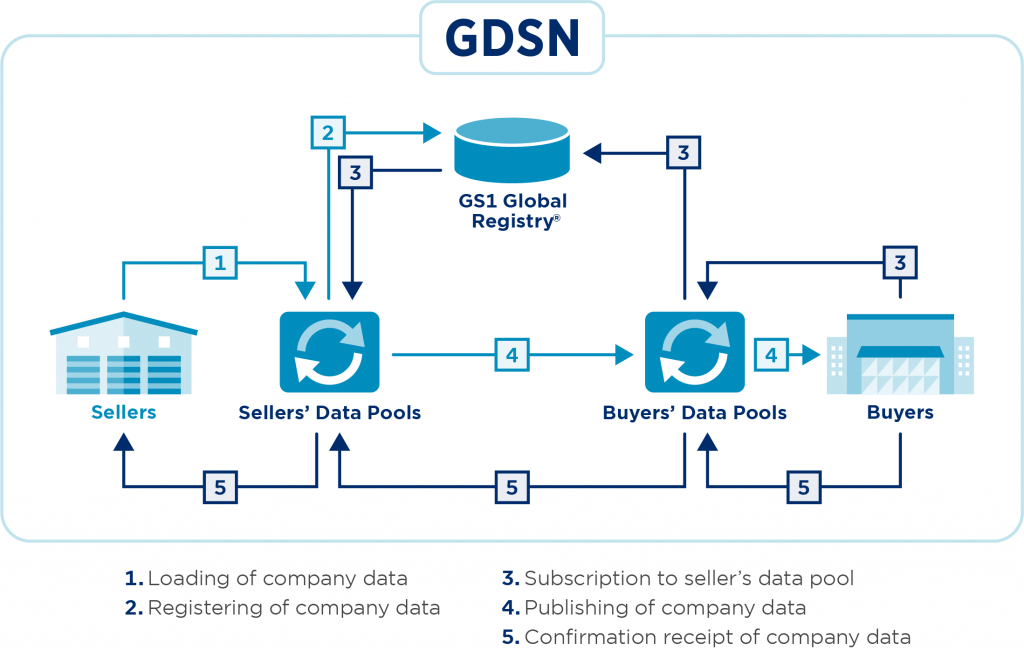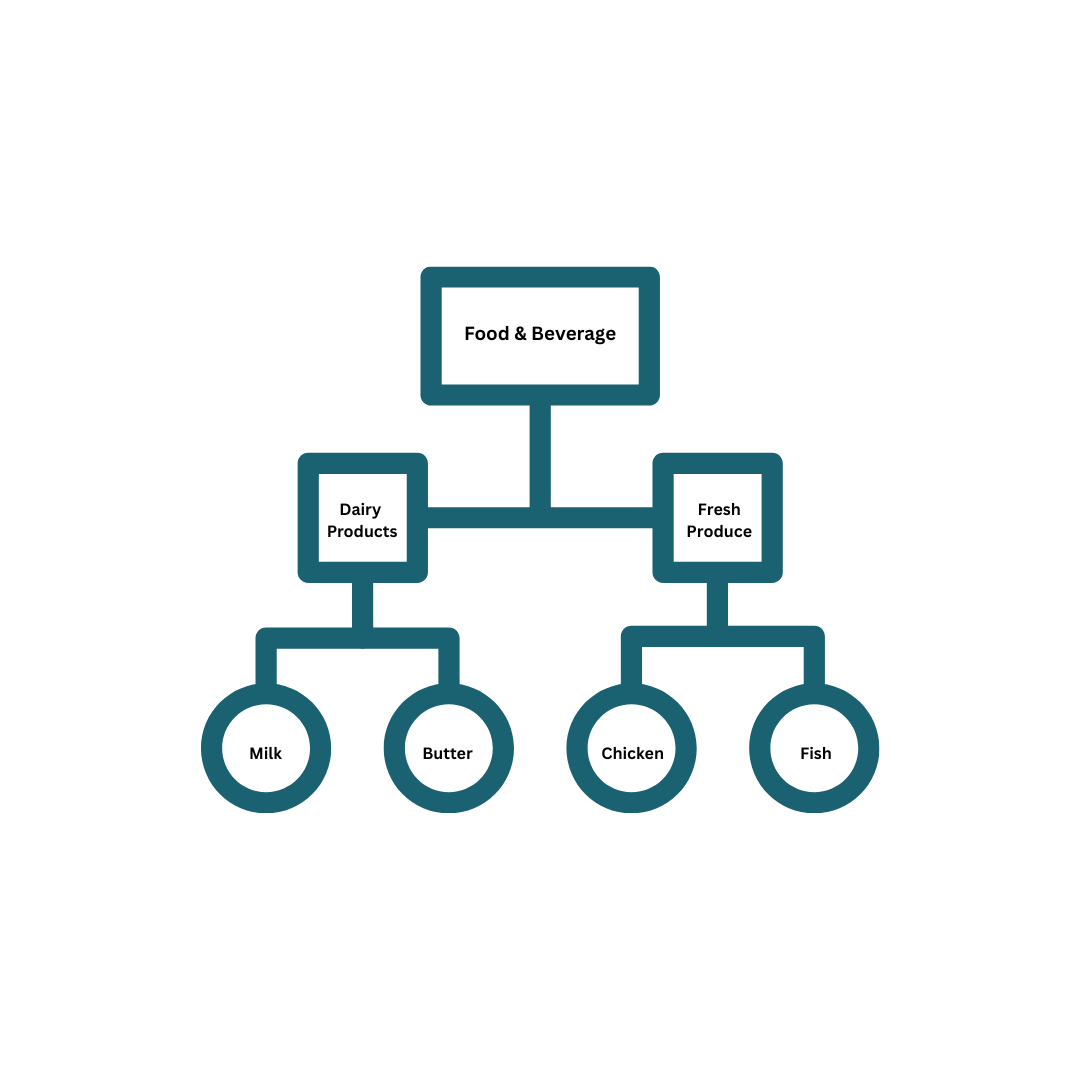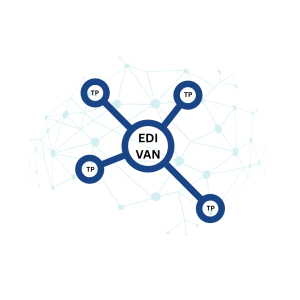Introduction
Global Product Classification (GPC) represents one of the most significant standardization initiatives in the realm of global commerce. Developed and maintained by GS1, the international organization behind the barcode, GPC provides a common language for grouping products in the same way, everywhere in the world. This standardization eliminates confusion, enhances supply chain visibility, and ultimately delivers tangible benefits to manufacturers, retailers, and consumers alike.
GPC is the chosen standard classification system for the Global Data Synchronization Network (GDSN). The GPC standard helps global trading partners to group or categorize products in the same way, everywhere in the world. The resulting common business language is clear and instantly understandable.
The GPC follows a four-tier classification system.
The four tiers are
- Segment,
- Family,
- Class, and
- Brick (with attributes)
Key Takeaways
Global Product Classification (GPC) is a standardized product categorization system developed by GS1 to enable consistent grouping of products worldwide.
GPC consists of four hierarchical levels: Segments, Families, Classes, and Bricks, with Bricks being the fundamental classification unit.
Implementation of GPC delivers significant benefits, including improved data accuracy, enhanced product discovery, supply chain efficiency, and regulatory compliance.
GPC plays a crucial role in global data synchronization and is essential for companies engaged in international trade.
The classification system is regularly updated to reflect evolving market needs, with new versions released biannually.
The Evolution of Product Classification
Historical Context
Product classification systems have evolved significantly over the decades, reflecting the changing needs of global commerce. Before standardized systems emerged, companies developed proprietary classification methods, creating a fragmented landscape that hindered efficient communication between trading partners.
The earliest formal classification systems were primarily designed for customs and tariff purposes, such as the Harmonized System (HS) introduced in the 1980s. While effective for their intended purpose, these systems lacked the granularity and flexibility required for modern supply chain management and data exchange.
As global trade expanded and digital commerce emerged, the need for a more comprehensive, business-oriented classification system became apparent. This need accelerated with the growth of electronic data interchange (EDI) and later e-commerce, where consistent product categorization became crucial for effective digital communication.
The Birth of GPC
The Global Product Classification (GPC) system emerged from this need for standardization. Developed by GS1, the international organization responsible for the barcode and numerous other supply chain standards, GPC was designed specifically to support the Global Data Synchronisation Network (GDSN) – GS1’s system for sharing standardized product information between trading partners.
Introduced in the early 2000s, GPC represented a significant advancement in the field of product classification. Unlike previous systems that were primarily designed for regulatory or statistical purposes, GPC was created with business needs at its core, focusing on facilitating clear communication between trading partners and enabling efficient data management.
The system was developed through extensive collaboration with industry stakeholders from around the world, ensuring that it would meet the diverse needs of global commerce. This collaborative approach has remained a cornerstone of GPC’s development, with regular updates and expansions based on industry feedback and emerging market requirements.
The Need for Standardized Classification
Why do we need standardized product classification in the first place?
The answer lies in the increasingly complex and interconnected nature of global supply chains.
In today’s business environment, companies operate across multiple markets, dealing with diverse partners who may use different languages and have varying classification systems. Without a common standard, this diversity creates significant challenges:
Communication barriers: When trading partners use different classification systems, misunderstandings and errors become common, leading to inefficiencies and increased costs.
Data management challenges: Inconsistent classification makes it difficult to aggregate and analyze product data, hindering business intelligence efforts.
Supply chain inefficiencies: Without standardized categorization, processes like inventory management, demand forecasting, and category management become more complex and less effective.
E-commerce limitations: Online marketplaces and procurement systems rely on consistent categorization to facilitate product discovery and comparison.
GPC addresses these challenges by providing a universally recognized framework for product classification, creating a common language that transcends borders, languages, and industry-specific terminology. This standardization is particularly valuable in an era where data has become a critical business asset, enabling more effective data management and utilization across the supply chain.
Understanding GPC Fundamentals
What is GPC?
Global Product Classification (GPC) is a standardized system that enables trading partners to group products consistently, regardless of country or language. It serves as a universal language for product categorization, facilitating unambiguous communication across the global supply chain.
At its core, GPC is a hierarchical classification system that organizes products based on their essential characteristics and intended uses. This organization creates a logical, intuitive structure that can be navigated and understood by users worldwide, regardless of their native language or local business practices.
GPC is maintained by GS1, the international organization that develops and maintains global standards for business communication, including the familiar barcode found on products worldwide. As part of GS1’s portfolio of standards, GPC works in conjunction with other GS1 identifiers and data standards to enable efficient, accurate business processes.
The primary purpose of GPC is to support the Global Data Synchronization Network (GDSN), GS1’s system for sharing standardized product information between trading partners. Before exchanging data in GDSN, companies must categorize their products using GPC, which determines the specific data attributes required for each product type and ensures consistency across the network.
Core Principles of GPC
Several fundamental principles underpin the GPC system:
Global applicability: GPC is designed to work across all markets, regions, and languages, providing a truly international standard for product classification.
Business relevance: Unlike some classification systems that focus on regulatory or statistical needs, GPC is built around actual business requirements, making it highly practical for commercial use.
Logical hierarchy: The system organizes products in a hierarchical structure that moves from general to specific, allowing users to navigate to the appropriate level of detail for their needs.
Flexibility: While providing a standardized framework, GPC is designed to accommodate the diverse range of products in the global marketplace, with regular updates to include new product categories as they emerge.
Attribute-based definition: Products are classified based on their essential characteristics rather than arbitrary categories, ensuring that similar products are grouped together regardless of how they might be marketed or sold.
Collaborative governance: The system is developed and maintained through extensive industry collaboration, ensuring that it remains relevant and useful to all stakeholders.
These principles ensure that GPC remains a practical, effective tool for global business communication, providing the standardization necessary for efficient supply chain operations while retaining the flexibility to adapt to changing market needs.
How GPC Differs from Other Classification Systems
It’s important to understand how GPC differs from other classification systems that businesses might encounter:
Harmonized System (HS) and Intrastat codes: These systems are primarily used for customs and international trade statistics. While they serve important regulatory functions, they lack the granularity and business orientation of GPC. There is no direct one-to-one match between GPC codes and HS/Intrastat codes, though companies often use both systems for different aspects of their operations.
United Nations Standard Products and Services Code (UNSPSC): Like GPC, UNSPSC is a global classification system, but it was designed primarily for procurement and expenditure analysis rather than product data synchronization.
Proprietary retail taxonomies: Many retailers and e-commerce platforms have developed their classification systems. While these may be well-suited to their specific needs, they lack the universal applicability of GPC, creating challenges for suppliers who must map their products to multiple systems.
Industry-specific classifications: Various industries have developed specialized classification systems for their products. While these may offer greater detail in specific areas, they lack the cross-industry standardization that GPC provides.
The key distinction of GPC is its focus on enabling efficient product data synchronization and communication between trading partners globally, with a structure specifically designed to support business processes across the supply chain. This focus makes GPC particularly valuable for companies engaged in international trade and those participating in the GS1 GDSN network.
The Structure of GPC

The GPC system is organized in a hierarchical structure that provides increasingly specific categorization at each level. This hierarchical approach allows users to navigate from broad industry segments to highly specific product classifications, ensuring that products can be categorized with appropriate granularity.
Hierarchical Levels Explained
GPC consists of four primary levels, moving from the most general to the most specific:
1. Segment
The Segment represents the highest level of the classification hierarchy and typically corresponds to a major industry or product category. There are relatively few Segments in the GPC system, as they are designed to provide the broadest possible grouping of products.
Examples of Segments include:
Food/Beverage/Tobacco
Health/Beauty/Personal Care
Household/Office Furniture/Furnishings
Clothing/Personal Accessories
Electronics
Toys/Games
Each Segment is identified by an 8-digit code, where the first two digits are meaningful and the remaining six are zeros (e.g., 10000000 for Food/Beverage/Tobacco).
2. Family
The Family level represents a subdivision of a Segment and groups together related product categories. Families provide a more specific categorization than Segments while still encompassing a broad range of products.
Examples of Families within the Food/Beverage/Tobacco Segment include:
Fruits/Vegetables/Nuts/Seeds
Meat/Poultry
Seafood
Dairy Products
Beverages
Each Family is identified by an 8-digit code, where the first four digits are meaningful and the remaining four are zeros (e.g., 11000000 for Beverages within the Food/Beverage/Tobacco Segment).
3. Class
The Class level provides a further subdivision of products within a Family, grouping together products with similar characteristics or uses. Classes offer a more granular level of categorization while still encompassing multiple specific product types.
Examples of Classes within the Beverages Family include:
Coffee/Tea/Substitutes
Soft Drinks
Alcoholic Beverages
Water
Dairy/Dairy Substitute Beverages
Each Class is identified by an 8-digit code, where the first six digits are meaningful and the remaining two are zeros (e.g., 11100000 for Soft Drinks within the Beverages Family).
4. Brick
The Brick is the fundamental building block of the GPC system and represents the most specific level of the classification hierarchy. Bricks group products that serve the same purpose and have similar characteristics, regardless of how they might be branded or marketed.
Examples of Bricks within the Soft Drinks Class include:
Cola
Root Beer/Birch Beer/Sarsaparilla
Lemonade/Limeade
Energy Drinks
Sports Drinks
Each Brick is identified by a unique 8-digit code (e.g., 10000223 for Cola within the Soft Drinks Class).
Brick Attributes and Values
Beyond the four main hierarchical levels, GPC provides additional classification capability through Brick Attributes and Brick Attribute Values:
Brick Attributes
Brick Attributes represent specific characteristics or properties that further differentiate products within a Brick. These attributes are relevant to particular types of products and provide additional detail about their nature or features.
For example, attributes for a soft drink might include:
Container Type
Carbonation Level
Sweetener Type
Caffeine Content
Brick Attribute Values
Brick Attribute Values are the specific options available for each Brick Attribute. They provide standardized terms for describing the various possibilities for each attribute.
For example, values for the “Container Type” attribute might include:
Bottle
Can
Carton
Pouch
The combination of Brick, Brick Attributes, and Brick Attribute Values allows for highly specific product classification while maintaining standardization. This detailed classification is particularly valuable for data synchronization, as it ensures that trading partners have a precise, shared understanding of product characteristics.
Coding System
The GPC coding system uses a structured approach to identify each element of the hierarchy:
All codes in the GPC system are 8 digits long
Segment codes have meaningful digits in positions 1-2 (e.g., 10000000)
Family codes have meaningful digits in positions 1-4 (e.g., 11000000)
Class codes have meaningful digits in positions 1-6 (e.g., 11100000)
Brick codes have meaningful digits in all 8 positions (e.g., 10000223)
This consistent coding structure makes it easy to identify the level of the hierarchy from the code itself and facilitates computer processing of GPC data. The building block of GPC is the Brick code, which is the primary code used in data exchange and is required for participation in the Global Data Synchronisation Network (GDSN).
Benefits of GPC
- Provides a common language for category management which speeds up the ability to react to consumer needs
- Improves data integrity and accuracy of product set-up, maintenance and catalogues
- Can be cross-referenced to existing proprietary trading partner classification systems
- Enables potential usage of Point Of Sale (POS) data consolidation
GDSN Defined
GDSN stands for Global Data Synchronization Network. The Global Data Synchronization Network (GDSN) is the world’s largest product data network. It is a system of connected firms that share product information in a standardized format. The GDSN enables manufacturers and sellers of goods to harmonize information about their products with their customers. Retailers and other buyers of goods subscribe to vendor catalogs and receive updates on them.

About GS1
GS1 is a neutral, not-for-profit, international organization developing and maintaining standards including barcodes. GS1 standards, services and solutions are designed to improve the efficiency, safety and visibility of supply chains across physical and digital channels in a wide variety of sectors.
Sources: GS1.org
Conclusion
The Global Product Classification (GPC) system serves as a valuable tool for standardizing and categorizing products on a global scale. By providing a consistent framework for product identification, It enhances communication, streamlines supply chain processes, and fosters better understanding among trading partners, contributing to increased efficiency in the global marketplace.
Ready to find out more about Commport GDSN Solution?
Download: GDSN Buyers Guide
Empower your business with global data synchronization; download our GDSN Buyer's Guide today and take the first step towards streamlined, accurate, and compliant product data management.
Frequently Asked Questions
Global Product Classification, is a standardized system for categorizing products globally. Its purpose is to provide a common language for product classification, facilitating accurate and consistent communication across different industries and regions.
It differs from other classification systems by offering a globally recognized and standardized approach to product categorization. It provides a framework that can be applied consistently across various industries, promoting harmonization in product identification.
It is utilized by businesses, organizations, and industries worldwide. It is applicable across a broad range of sectors, including retail, healthcare, logistics, and manufacturing, to ensure consistent and efficient product classification.
It benefits supply chain management by providing a standardized way to categorize products. This promotes accurate inventory management, facilitates smoother logistics, and improves communication between trading partners, ultimately enhancing overall supply chain efficiency.
It is not mandatory, but its widespread adoption makes it a beneficial tool for businesses seeking to improve communication and collaboration globally. Many industries and trading partners encourage or require the use of GPC for standardized product classification.





